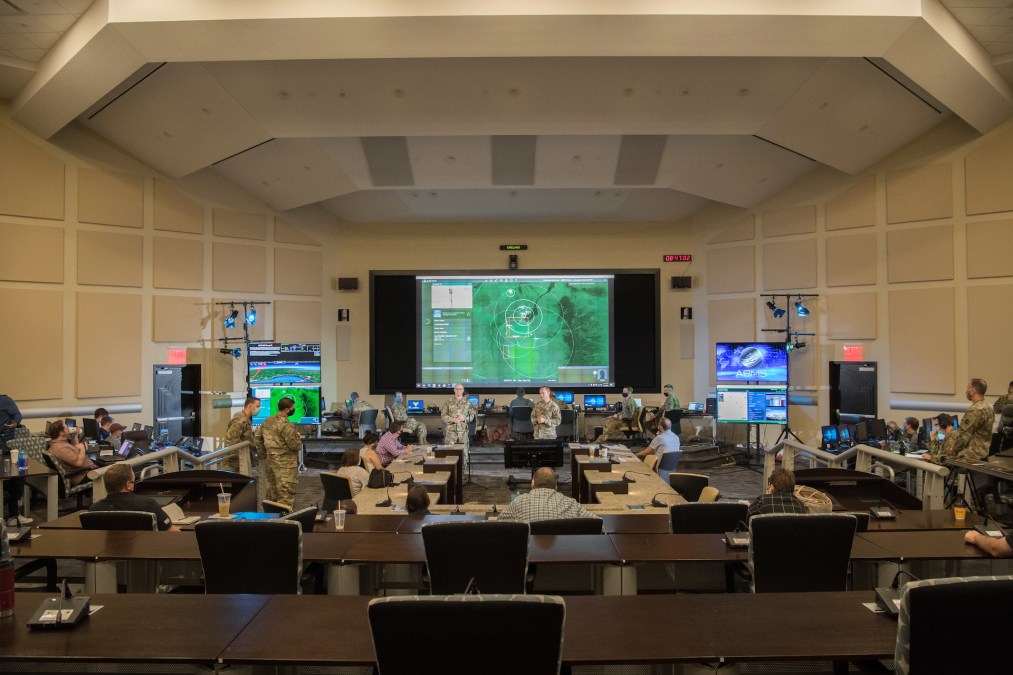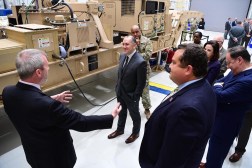Defense industry must buy into open standards for JADC2 to work, executives say

Defense firms must become more comfortable working together and sharing data in an open architecture if they hope to play a role in successfully delivering the military’s futuristic strategy for interconnected, sensor-driven battlefield operations, top executives said Tuesday.
Under the Department of Defense’s Internet of Things-like concept of operations known as Joint All Domain Command and Control (JADC2), no defense contractor should own any of the data that is collected, processed or shared among military services and across the domains of warfare, C-Suite leaders from Boeing, Northrop Grumman and L3Harris Technologies agreed during a panel at the Air Force Association’s 2021 Air, Space & Cyber conference. Rather, that will belong to the services and the larger systems they develop, like the Air Force and its Advanced Battle Management System (ABMS).
“Our belief is no one should own the net but the U.S. government; no one should own the data but the U.S. government,” said Richard Stapp, corporate vice president and CTO of Northrop Grumman. “We are moving into a new system where everything has to be open architected, and open data standards — just period.”
That could make some defense firms uncomfortable, especially if they’re used to building hardware and owning the entire stack and intellectual property related to it, Stapp said. “I think defense industry is going to have to look at new models of how they look at that data and that data sharing” in a more modular and open-architected setting.
Part of that can be taken care of through policy, but a large part of it is also behavioral, said Ross Niebergall, vice president and CTO for L3Harris Technologies. “That open systems approach means that the IP stays in the box, and everything between the boxes is completely open.”
“Ultimately, what I think that the Air Force needs is to be able to pick the best of breed of various components and various systems and architect the solution,” Niebergall said. “I think in this new paradigm, the Air Force is going to have a lot more responsibility and ownership of the overall architecture that we’re developing that will allow us to achieve some of this promise.”
Steve Nordlund, vice president and general manager of Phantom Works with Boeing, said that policy will also be key in shaping how data sharing works when third-party commercial technology, like cloud and artificial intelligence, is introduced as another player in the discussion.
“The person that’s going to own the network is going to be the government. The person that’s going to own the data is going to be the government,” Nordlund said. “We’ve got to figure out how do we add value and facilitating the decision making and the manipulation of the data, the timely delivery of the data to make it all happen, so the operator can benefit from it and have what he needs when he needs it to decide.”
Niebergall agreed: “Oftentimes, the commercial industries have better algorithms have better tools for doing that. But what we as an industry need to do is to leverage that capability because I think that what the Air Force is looking for is autonomy, more than just an algorithm that can pull a threat out of an image. And so I think we really do have to be more holistic about really taking advantage of all that the U.S. industry has to offer in solving these problems.”






